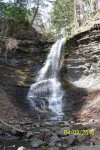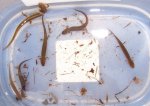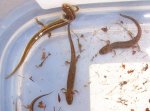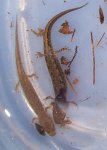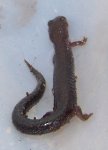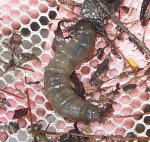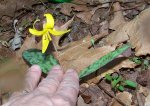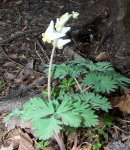- Joined
- Dec 13, 2006
- Messages
- 6,618
- Reaction score
- 102
- Points
- 63
- Location
- Wappingers Falls, NY
- Country
- United States
John stopped on his way back from VA and we went herping in the Catskills. Here we are fresh and hopeful at the beginning of our search. (1)
Our first stop was a waterfall with a stream running away from it (2). We had great and unexpected luck here! We found all these (3). Here are close-ups (4) (5) (6). I believe they were E. bislineata (the adults), dusky and spring salamander larvae (I forgot which scientific names he used, but I'm sure he can edit this and add them).
From John: In this post there is one Eurycea bislineata (Northern Two-Lined Salamander) and the rest are Desmognathus ochrophaeus (Mountain Dusky Salamander, northern phase) larvae at various stages of development (though that really plain one looks a little like a Spring Salamander larva - do you have any photos from the side, Dawn? Probably a dusky.
Our first stop was a waterfall with a stream running away from it (2). We had great and unexpected luck here! We found all these (3). Here are close-ups (4) (5) (6). I believe they were E. bislineata (the adults), dusky and spring salamander larvae (I forgot which scientific names he used, but I'm sure he can edit this and add them).
From John: In this post there is one Eurycea bislineata (Northern Two-Lined Salamander) and the rest are Desmognathus ochrophaeus (Mountain Dusky Salamander, northern phase) larvae at various stages of development (though that really plain one looks a little like a Spring Salamander larva - do you have any photos from the side, Dawn? Probably a dusky.
Attachments
Last edited by a moderator:


